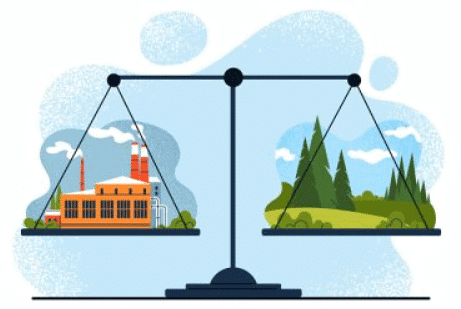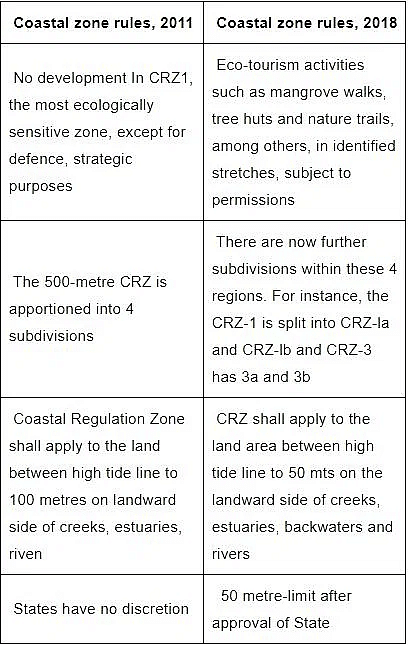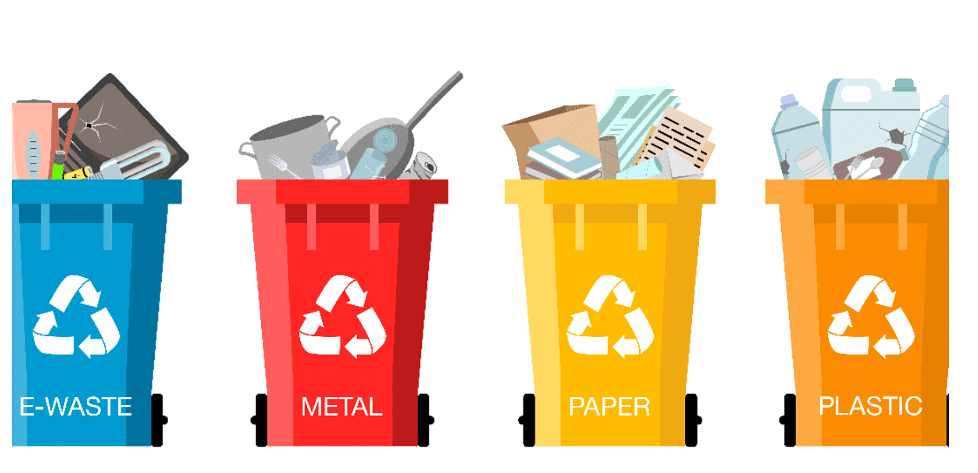UPSC Exam > UPSC Notes > Famous Books for UPSC Exam (Summary & Tests) > Shankar IAS Summary: Act And Policies
Shankar IAS Summary: Act And Policies | Famous Books for UPSC Exam (Summary & Tests) PDF Download
Wildlife Protection Act 1972
- India initiated environmental protection within its constitution, after the 1972 U.N. Conference on Human Environment in Stockholm, marking June 5th as World Environment Day.
- The Wildlife Protection Act, 1972, was a significant legislative step alongside other environmental laws like the Water Act (1974) and Forest Act (1980).
 Wildlife Protection
Wildlife Protection
Constitutional Provisions
- Article 48-A emphasizes the state's duty to protect and improve the environment, forests, and wildlife.
- Article 51-A (g) mandates citizens to protect and enhance the natural environment, including forests, lakes, rivers, and wildlife.
- Environmental protection is a fundamental duty enshrined in the Indian Constitution since 1976.
The Wildlife(Protection) Act of 1972
- It marked a crucial moment in wildlife legislation as forests and wildlife were initially under state jurisdiction.
- The Act has been adopted by all states except Jammu and Kashmir, which has its own similar law.
- The Act provides a framework for wildlife protection and management and has been amended several times for effective implementation.
 Wild Animals
Wild Animals
The Rationale for the Act
- India's wildlife faced rapid decline, even in protected areas like sanctuaries and National Parks.
- Previous laws like the Wild Birds and Animals Protection Act, 1935, were outdated and inadequate in addressing current challenges.
- The Act addresses various factors contributing to wildlife decline, including hunting, trade, taxidermy, and poaching.
Salient Features of the Act
- The Act classifies wildlife into Schedules I to V based on their survival risk, with Schedule I animals receiving total protection.
- An expert committee oversees amendments to the Act.
- State governments' powers to declare wild animals as vermin have been largely withdrawn, and provisions for compulsory livestock immunization near protected areas have been added since the 1991 amendment.
Environment (Protection) Act, 1986
- The Act draws its authority from Article 48A and Article 51A (g) of the Indian Constitution.
- It authorizes the Central Government to prevent and control pollution and establish machinery for environmental protection.
- The Act enables sample collection for evidence of environmental offenses.
- Special procedures are outlined for handling hazardous substances.
- It relaxes the rule of "Locus Standi," allowing citizens to approach the Court after a notice period of sixty days.
- The Act empowers the Central Government to issue directives for industry operation, closure, or regulation without court orders.
- Strict penalties include imprisonment up to five years, fines up to one lakh rupees, and daily penalties for continued violations.
- Government officers are granted immunity for acts under this Act, and Civil Courts are barred from jurisdiction over related matters.
- The Act establishes supremacy over inconsistent enactments.
 Ecological Balance
Ecological Balance
National Forest Policy, 1988
- Aims to ensure environmental stability, ecological balance, and atmospheric equilibrium for all life forms.
Objectives
- Preserve natural forests representing biological diversity and genetic resources.
- Prevent soil erosion, denudation, sand-dune extension, and promote afforestation.
- Increase forest productivity, efficient utilization of forest produce, and substitution of wood.
Major Achievements of National Forest Policy, 1988
- Increased forest and tree cover.
- Involvement of local communities in forest protection and management.
- Meeting rural and tribal needs for fuel wood, fodder, and minor forest produce.
- Contribution to environmental stability and ecological balance.
Biological Diversity Act, 2002
- Inspired by the objectives of the United Nations Convention on Biological Diversity (CBD) 1992.
- Aims to conserve biological diversity, ensure sustainable use of components, and equitable sharing of benefits.
 Biological Diversity
Biological Diversity
Objectives
- Conservation of biological diversity.
- Sustainable use of its components.
- Fair and equitable sharing of benefits from genetic resources.
- Structure: Three-tier regulation comprising the National Biodiversity Authority (NBA), State Biodiversity Boards (SBB), and Biodiversity Management Committees (BMC) at the local level.
The Scheduled Tribes and other Traditional Forest Dwellers Act, 2006
- Forest Rights Act, 2006 provides for the restitution of deprived forest rights across India, including both individual rights to cultivated land in forestland and community rights over common property resources.
- The Act integrates conservation and livelihood rights.
FRA is a potential tool
- To empower and strengthen the local self-governance.
- To address the livelihood security of the people.
- To address the issues of Conservation and management of the Natural Resources and conservation governance of India.
 Natural Resources
Natural Resources
Salient Features
- The Nodal Agency for the implementation is MoTA.
- Applicable for Tribal and Other Traditional Forest Dwelling Communities.
- Recognition of forest rights of other traditional forest dwellers provided they have for at least three generations prior to 13.12.2005 primarily resided in and have depended on the forest or forest land for bonafide livelihood needs.
- The maximum limit of recognizing rights on forest land is 4 ha.
- National Parks and Sanctuaries are included for the recognition of Rights.
- Recognition of ownership access to collect, use, and dispose of minor forest produce traditionally collected within or outside village boundaries.
- The Act provides forest rights relating to the Government providing for the diversion of forest land for various purposes.
- Rights conferred under the Act shall be heritable but not alienable or transferable.
- No eviction or removal from forest land under occupation till the recognition and verification procedure is completed.
- Gram Sabha is designated as the competent authority for initiating the process of determining the nature and extent of individual or community forest rights.
Green Highways Policy, 2015
- India has a total of 46.99 lakh kms of road length, including over 96214 kms of National Highways, carrying about 40% of the traffic load.
- Vision to develop eco-friendly National Highways with community participation, involving farmers, NGOs, the private sector, institutions, government agencies, and the Forest Department.
- The objective is to reduce the impacts of air pollution and dust, arrest soil erosion, and reduce the glare of oncoming vehicles.
 ISRO’s Bhuvan
ISRO’s Bhuvan - Community involvement in tree plantation generates employment.
- 1% of the total project cost of all highway projects allocated for highway plantation and maintenance, generating employment opportunities for rural areas.
- Provisions about responsibilities are clearly defined.
- Monitoring of plantation status included using ISRO’s Bhuvan and GAGAN satellite systems.
- Highways developed as green corridors sustain biodiversity, regenerate natural habitat, and benefit stakeholders.
Chemical Safety
- The government notified the Manufacture, Storage, and Import of Hazardous Chemicals Rules, 1989 and Chemical Accidents (Emergency Planning, Preparedness and Response) Rules, 1996 to ensure chemical safety in the Country.
- Criteria delineated for identification of Major Accident Hazard (MAH) unit.
- An off-site emergency plan is required for districts having an MAH unit.
- 1,861 MAH units in the Country, located in 303 districts.
Coastal Regulation Zone, 2011
- In the 1991 Notification, the CRZ area was classified as CRZ-I (ecological sensitive), CRZ-II (built-up area), CRZ-III (Rural area), and CRZ-IV (water area).
- The 2011 Notification retains the above classification with the inclusion of CRZ-IV, covering water areas up to the territorial waters and tidal-influenced water bodies.
- A separate draft Island Protection Zone Notification has been issued for Andaman & Nicobar and Lakshadweep under the Environment (Protection) Act, 1986.
 Lakshadweep
Lakshadweep
Significant Provisions in the Coastal Regulation Zone, 2011
- The area between Low Tide Line and High Tide Line has been introduced for protection under the provisions of various acts.
- Protected areas under the Wildlife (Protection) Act, 1972, and the Forest (Conservation) Act, 1980 include coral and mangrove habitats, turtle nesting grounds, seagrass beds, etc.
- Restrictions and permissions are defined concerning development activities in various zones of CRZ.
Activities Permitted and Restricted in CRZ
- CRZ-I, CRZ-II, CRZ-III, and CRZ-IV are classified with specific activities permitted and restricted in each zone.
- Development activities are regulated based on environmental sensitivity and social implications.
- Regulations regarding construction, waste disposal, and pollution control are outlined.
CRZ Notification, 2018 and Its Salient Features
- The Notification aligns with the aspirations of coastal communities while ensuring the welfare of vulnerable populations.
- It addresses the needs of inhabitants living within reserves and promotes economic growth along with conservation principles.
- CRZ clearance procedures have been streamlined, delegating powers to the state level for CRZ-II and CRZ-III projects.

Island Protection Zone Notification, 2011
- A separate notification is required to manage the biodiversity-rich islands of Andaman & Nicobar and Lakshadweep.
- Objectives include ensuring livelihood security, conserving coastal stretches, and promoting sustainable development based on scientific principles.
The Coastal Regulation Zone, 2011, and subsequent notifications aim to balance environmental conservation with sustainable development in coastal and island regions, safeguarding biodiversity while addressing the needs of local communities.
Solid Waste Management Rules, 2016
- India generates 62 million tonnes of waste annually, including plastic waste, biomedical waste, hazardous waste, and e-waste.
- Per capita waste generation in Indian cities ranges from 200 to 600 grams per day.
- Only about 75-80% of municipal waste is collected, and only 22-28% of it is processed and treated.
- The Rules extend beyond municipal areas to various urban zones and industrial areas.
- Source segregation of waste is mandated to promote waste recovery, reuse, and recycling.
 Plastic Waste
Plastic Waste
Time Frame
- Upgrading old waste processing facilities by local bodies with a population of 5 million or more.
- Setting up sanitary landfills and bio-mediation of old dumpsites within specific timelines.
Duties of Waste Generator
- Segregate and store waste in three separate streams: bio-degradable, non-bio-degradable, and hazardous.
- Pay a user fee to waste collectors and face spot fines for littering and non-segregation.
 Bio-degradable waste
Bio-degradable waste
Duties of Ministry of Urban Development
- Formulate national policies and strategies on solid waste management, including waste-to-energy initiatives.
- Provide technical guidance, project finance, and capacity building to local bodies.
Promotion of Marketing and Utilization of Compost
- Encourage the utilization of compost in agriculture by setting quality standards and facilitating its production.
Promotion of Waste-to-Energy Plants
- Ministry of Power regulates tariffs for power generated from waste-to-energy plants.
- Encourages industries to set up waste recovery and recycling facilities.
Hazardous Waste Management Rules, 2016 and Its Salient Features
- Defines hazardous waste and distinguishes it from other wastes, recognizing the latter as resources for recycling and reuse.
- Incorporates waste management hierarchy emphasizing prevention, minimization, reuse, recycling, recovery, and safe disposal.
- Streamlines approval processes and provides for co-processing of hazardous waste for energy recovery.
- Mandates state governments to ensure environmentally sound management of hazardous and other wastes.
 Waste Management
Waste Management
Hazardous and Other Wastes Amendment Rules, 2019
- Prohibits the import of solid plastic waste into the country.
- Exempts exporters of silk waste from requiring permission for export.
- Allows defective electrical and electronic assemblies and components exported from India to be imported back without permission.
- Industries exempted from water and air pollution control consent are also exempted from authorization under hazardous waste rules if wastes are managed appropriately.
These regulations aim to improve waste management practices, minimize environmental impact, and promote sustainable development by effectively managing solid and hazardous wastes.
Construction and Demolition Waste Management Rules, 2016
- These rules apply to all entities involved in generating construction and demolition waste.
Responsibilities of Waste Generators
- Segregate waste and deposit it at designated collection centers or authorized processing facilities.
- Ensure waste is not littered to prevent traffic obstruction or public inconvenience.
- Large generators must submit a waste management plan and obtain approvals before commencing any construction, demolition, or remodeling work.
- Segregate waste into four categories: concrete, soil, steel, wood and plastics, bricks, and mortar.
 Construction Waste
Construction Waste
Duties of Service Providers and Contractors
- Develop a comprehensive waste management plan within six months of notification.
- Remove all construction and demolition waste in consultation with local authorities.
- Timeframe for Implementation: Major cities must commission processing and disposal facilities within specified timeframes based on population size.
- Responsibilities of Local Authorities:
- Ensure proper management of construction and demolition waste within their jurisdiction.
- Mandate the use of materials made from construction and demolition waste in municipal and government contracts.
Biomedical Waste Management Rules, 2016
- These rules cover the management of biomedical waste generated from healthcare facilities.
- Biomedical waste includes human and animal anatomical waste, treatment apparatus, and materials used in healthcare activities.
 Biomedical Waste
Biomedical Waste
Salient Features:
- Expansion of rules to include various healthcare activities beyond hospitals.
- Phase-out of certain types of plastic bags and gloves within a specified timeframe.
- Pre-treatment of laboratory waste and implementation of a bar-code system for proper waste disposal.
- Stringent standards for incinerators and emissions limits for pollutants.
- Simplification of authorization procedures for waste management facilities.
- Requirement for state governments to provide land for common biomedical waste treatment facilities.
- Operators of treatment facilities must ensure timely waste collection and conduct training for healthcare facilities.
- Amendment Rules, 2018:
- Further phase-out of specific types of plastic bags and gloves within a set deadline.
- Mandate for healthcare facilities to publish annual reports on waste management practices.
- Introduction of barcoding and GPS systems for efficient biomedical waste handling.
These rules and amendments aim to regulate the management of construction and demolition waste and biomedical waste effectively, ensuring environmental sustainability and public health safety.
E-Waste Management Rules, 2016
- Annual generation of E-waste is 17 lakh tonnes with a 5% annual increase.
- Introduction of Extended Producer Responsibility (EPR) for producers, making them responsible for E-waste collection and exchange.
Salient Features
- Introduction of Manufacturer, dealer, refurbisher, and Producer Responsibility Organization (PRO) as additional stakeholders.
- Extension of rules to include components, consumables, spares, and parts of Electrical and Electronic Equipment (EEE).
- Inclusion of Compact Fluorescent Lamp (CFL) and other mercury-containing lamps.
- Adoption of collection mechanisms like collection centers, take-back systems, etc., for efficient E-waste management.
 Compact Fluorescent Lamp
Compact Fluorescent Lamp - Provision for setting up PRO, E-waste exchange, e-retailer, Deposit Refund Scheme for EPR implementation.
- Introduction of Pan India EPR Authorization by CPCB.
- Phase-wise collection targets for E-waste under EPR, increasing over the years.
- Introduction of Deposit Refund Scheme for additional economic incentive.
- Manufacturers are responsible for collecting E-waste generated during manufacturing processes.
- Responsibilities assigned to dealers, refurbishers, and state governments for proper E-waste management.
- Introduction of transportation guidelines, liability provisions, and responsibilities of Urban Local Bodies.
Plastic Waste Management Rules, 2016
- Daily generation of plastic waste is 15,000 tonnes, with only 9,000 tonnes collected and processed.
- Emphasis on improving plastic waste management systems instead of imposing blanket bans.
Salient Features
- Increase in minimum thickness of plastic carry bags and sheets to facilitate recycling.
- Promotion of plastic waste utilization for road construction or energy recovery.
- Extension of rules to rural areas with Gram Panchayats responsible for implementation.
- Introduction of waste generators' responsibility for segregation and fee payment.
- Event organizers made responsible for managing plastic waste generated during events.
- Inclusion of plastic sheet packaging within the rules.
 Gram Panchayats
Gram Panchayats - Introduction of Extended Producer Responsibility (EPR) with responsibilities for producers and brand owners.
- Requirements for SPCBs regarding registration and monitoring of plastic products.
- Assignment of responsibilities to retailers and street vendors for proper plastic waste management.
- Establishment of a central registry for producers and brand owners.
- Phasing out of non-recyclable multi-layered plastic within two years.
Wetlands (Conservation and Management) Rules, 2017
- Decentralization of wetland management to State governments for local conservation efforts.
- Replacement of CWRA with the National Wetland Committee.
- Prohibition of encroachments, waste dumping, and discharge of untreated waste into wetlands.
- Conservation is based on the principle of wise use determined by Wetlands Authority.
 Wetlands
Wetlands
Shortfalls
- Exclusion of certain wetlands from the definition may lead to ineffective management.
- Lack of uniformity in defining and conserving wetlands due to state/UT discretion.
- Absence of an appeals provision to the National Green Tribunal.
- No specified timeline for phasing out waste dumping into wetlands.
- Inconsistency with the Jagpal Singh vs State of Punjab (2011) judgment for wetland restoration.
- Emphasis on conserving wetland ecosystem integrity for effective conservation.
The document Shankar IAS Summary: Act And Policies | Famous Books for UPSC Exam (Summary & Tests) is a part of the UPSC Course Famous Books for UPSC Exam (Summary & Tests).
All you need of UPSC at this link: UPSC
|
744 videos|1444 docs|633 tests
|
FAQs on Shankar IAS Summary: Act And Policies - Famous Books for UPSC Exam (Summary & Tests)
| 1. What is the purpose of the Wildlife Protection Act 1972? |  |
Ans. The Wildlife Protection Act 1972 aims to protect wildlife and their habitats, regulate hunting and poaching, and prevent the illegal trade of wildlife and wildlife products. It provides legal provisions for the conservation and management of wildlife species listed under different schedules of the Act.
| 2. What is the objective of the Environment (Protection) Act, 1986? |  |
Ans. The objective of the Environment (Protection) Act, 1986 is to protect and improve the environment by preventing and controlling pollution, promoting sustainable development, and safeguarding the health of both humans and ecosystems. It empowers the central government to take necessary measures to protect and conserve the environment.
| 3. What does the National Forest Policy, 1988 entail? |  |
Ans. The National Forest Policy, 1988 outlines the government's approach towards the conservation, protection, and sustainable management of forests in India. It emphasizes the importance of increasing forest cover, promoting afforestation and regeneration of degraded forests, and involving local communities in forest conservation activities.
| 4. What is the significance of the Biological Diversity Act, 2002? |  |
Ans. The Biological Diversity Act, 2002 aims to conserve India's biological diversity, sustainably use its components, and ensure the equitable sharing of benefits arising from the utilization of biological resources and knowledge. It establishes mechanisms for the conservation of biodiversity, protection of traditional knowledge, and regulation of access to genetic resources.
| 5. What is the objective of the Solid Waste Management Rules, 2016? |  |
Ans. The Solid Waste Management Rules, 2016 aim to promote proper waste management practices, reduce the generation of waste, and ensure the safe disposal of solid waste. It emphasizes waste segregation, recycling, and the establishment of waste processing and treatment facilities. The rules also encourage public participation and responsibility in waste management.
Related Searches

















